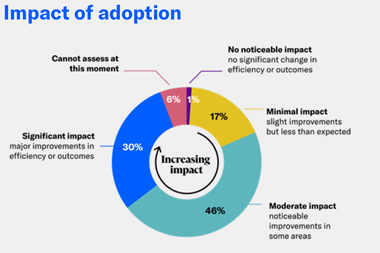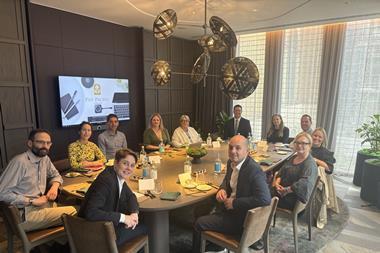A hundred years ago, pirates were only a concern if you were on the high seas and carrying a cargo of gold. Now, they can be found across the street or around the world, in the office or in cyberspace. Today's gold is intellectual property (IP) and in today's world, IP infringement is big business - a big, billion-dollar business with a catch-me-if-you-can attitude.
In 2001, the phenomenal success of the file-swapping service, Napster, which had 60 million users circumventing copyright laws with a single mouse click, gave copyright infringement a certain cachet and sense of legitimacy. The force of the Napster phenomenon and other peer-to-peer software programs spurred much of the dialogue around IP infringement and has exposed the potential breadth of impact of the problem.
The Napster phenomenon may have given the illusion that the battle over IP protection was over before it began, but the battle remains, and it is one that is too important for companies to ignore. IP is at the heart of modern business, whether in the form of technology, products, brand names, music, films, research, or strategic plans. As such it is core to a company's value and its ability to deliver competitive edge.
Worryingly, IP infringement and theft is on the rise. A recent survey carried out by Kroll, questioning 148 senior executives with corporate responsibility for IP in 49 countries, found that 46% of the holders of registered trade marks had detected at least one case of unauthorised use, with 9% reporting over 50 instances. In addition, 32% of patentees and 35% of copyright owners had discovered unauthorised use in the previous 12 months.
These are significant figures. Worse, while monitoring systems were present in only 16% of businesses, there is a consensus that IP abuse is widespread. It is likely that the ad hoc detection widely relied upon fails to uncover all instances of IP infringement. In short, these statistics may just be the tip of the iceberg.
Why it is getting worse
There are three principal reasons for the rise in IP infringement.
These trends are extremely concerning for global business. The failure to develop a comprehensive IP protection strategy can cost companies and entire industries billions of dollars, lead to a loss of competitive advantage, and potentially destroy a company. Being reactive and relying on ad hoc detection and knee-jerk defensive responses is a dangerous strategy that runs a high risk of loss. As is always the case, prevention is better than cure. The key question for corporates is, 'where are the key areas of risk and what should I be doing to protect them?'
Risks and solutions
A culture of indifference. The value of a company's IP, and therefore the cost of any infringement, is difficult to calculate. The attitude of indifference that this engenders is the most significant threat to businesses in terms of IP infringement. A corporate mindset that is willing to proactively detect, deter and respond to IP threats is the single most effective barrier to IP infringement. The problem can be effectively dealt with – where there is a will, there is always a way. A few key actions, such as implementing a formal monitoring process for detecting IP infringement, lobbying governments for regulatory change and pursuing redress wherever possible, can reap significant dividends.
The enemy within. A company's human capital is one of the key risk areas for IP infringement, whether this be unintentional or intentional. Employees fall into two broad risk categories: honest staff who are unaware of the risks and costs of IP infringement, and dishonest employees who actively seek to profit from IP theft from within. The former vastly outweigh the latter. The prime issue in safeguarding IP is therefore educating employees to make them appreciate the value of IP, the relevance of this value to the success of the company (and therefore its employees), and the need to protect this value.
However, measures also need to be taken against the small minority of dishonest employees. Employee disloyalty, fraud or theft is a top risk for IP owners. Yet despite this, many never check the criminal or credit records of prospective employees. This should be a standard procedure. Computer passwords and firewalls are standard in most businesses, but passwords are seldom changed at regular intervals and firewalls are not keeping pace with technological developments. Too many firms still fail to back-up their significant data regularly, to prevent losing it. Again, this should be a standard procedure. If deemed appropriate, web behaviour and employee e-mail can be monitored with a view to protecting IP. Video cameras can be used in physical premises.
A licence to steal. The second major risk group in terms of IP is untrustworthy licensees. Most companies license their IP to manufacturers or distributors, but many fail to take the defensive measure of performing due diligence prior to signing licensing agreements. Once agreements are in place, many companies never bother to audit licensees. Failure to take such key steps exposes corporates to significant risks.
Vulnerability
In today's knowledge-based economy, a business's intellectual capital is its key driver of competitive advantage. It should be treated with the respect that it deserves. Companies must become more proactive in protecting their IP assets. Formal policies that specifically address IP security need to be implemented. Only a minority of companies have ever conducted a formal IP vulnerability review. Such a review can yield significant benefits by highlighting potential pitfalls, examining current procedures and then indicating the requisite course of action to safeguard this most crucial of corporate assets.
Anne Tiedemann is regional head for Kroll Europe, Middle East & Africa, Tel: 020 7969 2611, E-mail: atiedemann@krollworldwide. com . The Kroll IP survey can be found at www.krollworldwide.com
Don't Risk your IP



















